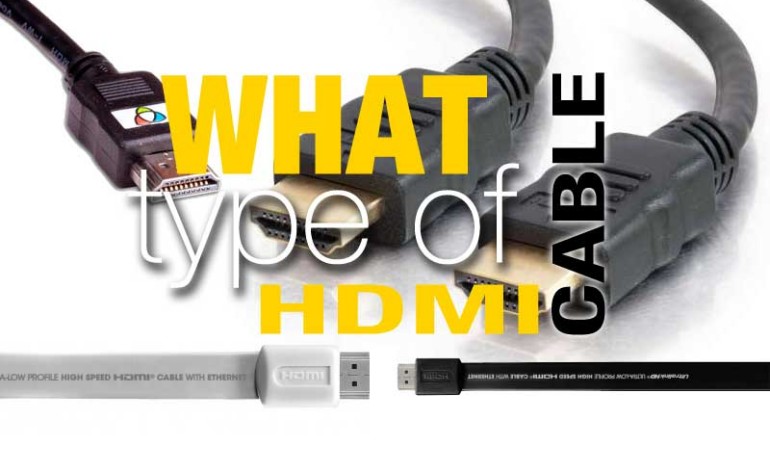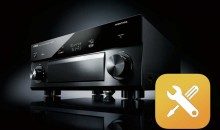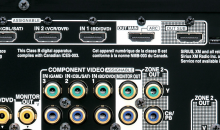Which HDMI Cable Do I Need?
HDMI cables may have simplified things in terms of combining audio and video into a single connection, but knowing which HDMI cable to choose for home theater depends a lot on your understanding of the distance to be traveled and the formats being transmitted. It gets even more difficult when people don’t really know what they want, or have any idea of the options available to them. Add to that confusing packaging and mislabeled products that make bold marketing claims, and the confusion compounds quite quickly. One thing that does clear up the confusion is that there are really only five HDMI cable types. Once you realize that, you’re well on your way to getting what you really need.
So what do you do? You ask questions. And we give answers. Or at least we try. Here are some questions you’ll want to ask yourself as you attempt to understand which HDMI cable you need for your particular installation.
Are You Looking for a Cable Under 6 Feet Long?
If you’re looking for a cable under six feet in length then you’re in luck—just about any well-made Standard HDMI cable will work for you with few exceptions. HDMI is remarkably robust at this distance. It doesn’t take special high speed cables or active electronics to make it 6 feet. Of course, if you plan on transmitting 4K signal or Ethernet, then you want to get a high-speed rated cable. Otherwise, grab anything you like so long as it’s well-made and hasn’t been run over by a tractor trailer.
Cable Recommendation: Standard HDMI Cable. If you want Ethernet capability then be sure to get a cable that is labeled “with Ethernet”.
[top-seller category_id=’33’ product_count=’4′ title=’Top Selling HDMI Cables’]
Are You Looking for a Cable Over 6 Feet Long?
You MUST go with a High Speed HDMI cable if you want any sort of success with the newer high resolution video formats coming down the road. Even though it may seem preposterous that you’d need a High Speed HDMI cable to go 10 feet, we’ve seen enough cable failure (and certainly expect even more at 4K!) to know that High Speed HDMI is more than just a spec, it’s an insurance policy.
Cable Recommendation: High Speed HDMI or High Speed HDMI with Ethernet
Do Your Source Component AND Display Support Ethernet over HDMI?
Liar! 😉 Nothing supports Ethernet over HDMI (or HDMI Ethernet Channel – HEC). To-date we don’t know of a single manufacturer who has actually implemented this, though we think the idea is sound and would, in theory at least, save lots of cabling and hassle.
Guess what? That means that you never really ever have to buy any HDMI cable with the Ethernet feature. At the very least it means you shouldn’t pay more for that feature. Announced in 2011, it doesn’t look like it’s coming anytime soon, nor does it appear to be in the works for any manufacturer we’ve talked to. The manufacturers simply aren’t facilitating this feature and consumers haven’t exactly made it clear that it’s on the top of their list. Silicon Image has a chipset that supports it (the SiI9387A Port Processor), so at this point it seems to be an issue with implementation and similar issues.
Cable Recommendation: Fooled you. Trick Question
Is Your Cable Run Between 7 feet and 25 feet long?
If you’re at a distance I call “the intermediate” stage, then you need, for certain, a High Speed HDMI Cable. You can also opt for a High Speed Ethernet Cable with Ethernet, but the bottom line is that a High Speed cable is the only thing that will handle 1080p (or greater) transmission with all the trimmings HDMI 1.4 and 2.0 bring to the table. Besides, with a run this long, it’s likely you’re going into a wall or ceiling and who wants to upgrade a cable in that type of scenario?
Cable Recommendation: High Speed HDMI or High Speed HDMI with Ethernet
Is Your Cable Run Over 25 feet long?
When you get to distances over 25 feet then which HDMI cable you need really leans towards an active HDMI cable solution. This might be a RedMere-enabled HDMI cable with an embedded chipset, or it might be a powered fiber optic solution. In either case, the idea is that “you can’t get there from here” is the mantra you should be saying in your head when you expect to send 4K at distances over 25 feet using a passive HDMI cable. It;s likely not to work or, at best, be unpredictable or intermittent.
Cable Recommendation: Active High Speed HDMI or Active High Speed HDMI with Ethernet
Is Your Cable Run Over 60 feet long?
Now we’re talking! Which HDMI cable you use for runs over 60 feet really comes down to what kind of balun system you want to use to transmit the data over those longer distances. Baluns are devices which convert a signal from one form to another in order to transmit those signals over larger distances than would be possible with the traditional cable. There are several products which will let you use a single Cat5e cable, for example, to extend HDMI up to 300 feet or more. This type of system really allows you to get some serious distance and, for the most part, in a way that is foolproof and rock solid.
Cable Recommendation: Two short High Speed HDMI cables plus a Cat5e-based active balun system
Which HDMI Cable If You Require Wireless HDMI?
I always recommend a hard-wired HDMI connection, but if it’s absolutely impossible then there are some wireless HDMI systems on the market. These systems typically work on either a 2.4 GHz, 5.x GHz, or a 60 GHz frequency. Here’s the thing though—higher isn’t always better. While there is a definitely motivation to get out of the home networking wireless range (2.4 GHz and 5.x GHz, there is also the very real matter of the laws of physics. Higher frequencies tend to “bounce off” as opposed to penetrating into walls. Where a 2.4 GHz or 5.8 GHz system may, for example, be able to transmit from a closet to a room, a 60 GHz system almost certainly will not. Keep that in mind when you select which system you want to go with.
Cable Recommendation: It’s not a cable, but a couple short High Speed HDMI cables and a nice wireless HDMI solution will do wonders for getting that isolated television to communicate with your DISH Network box.







Great info